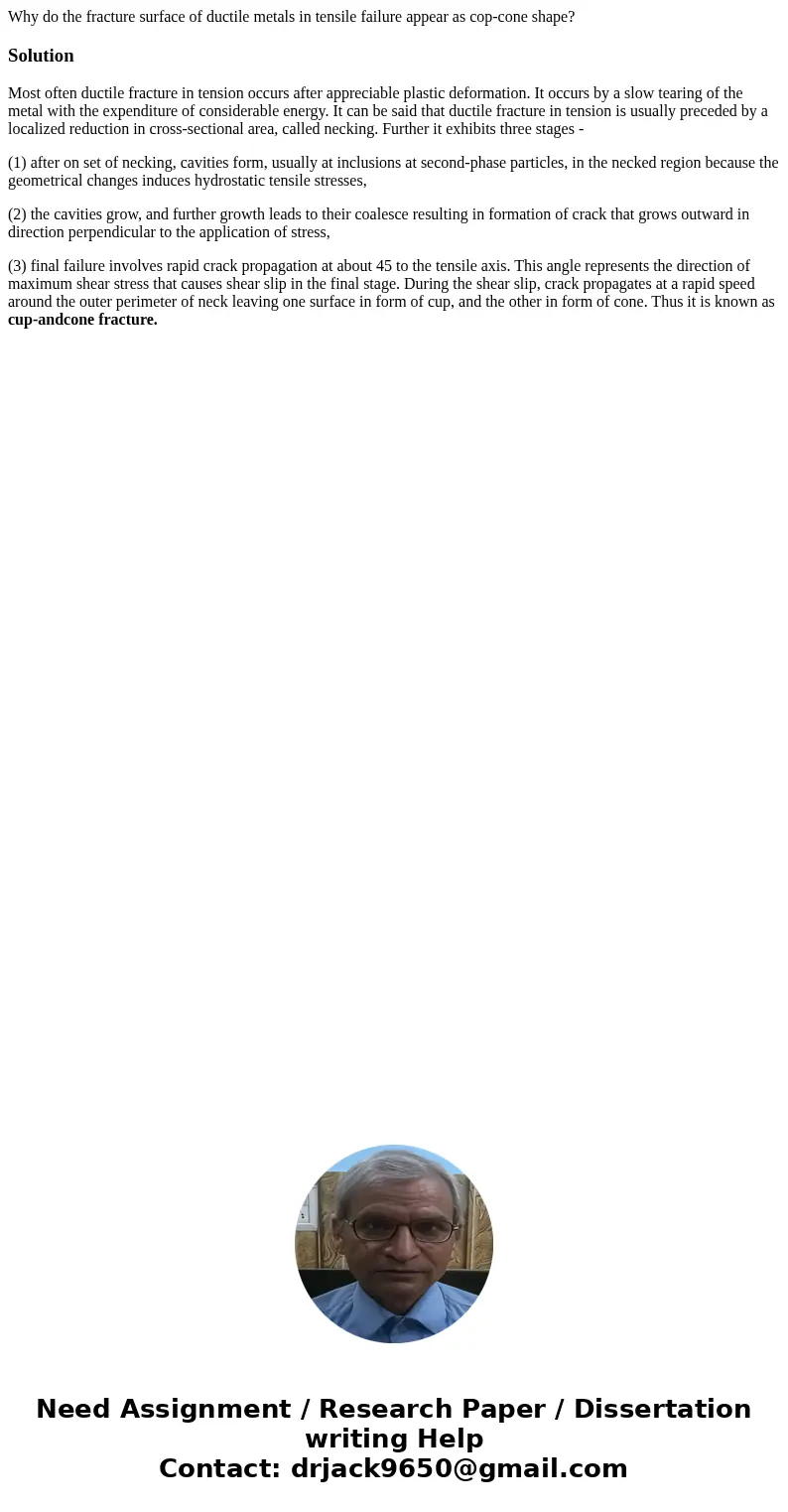Why do the fracture surface of ductile metals in tensile fai
Solution
Most often ductile fracture in tension occurs after appreciable plastic deformation. It occurs by a slow tearing of the metal with the expenditure of considerable energy. It can be said that ductile fracture in tension is usually preceded by a localized reduction in cross-sectional area, called necking. Further it exhibits three stages -
(1) after on set of necking, cavities form, usually at inclusions at second-phase particles, in the necked region because the geometrical changes induces hydrostatic tensile stresses,
(2) the cavities grow, and further growth leads to their coalesce resulting in formation of crack that grows outward in direction perpendicular to the application of stress,
(3) final failure involves rapid crack propagation at about 45 to the tensile axis. This angle represents the direction of maximum shear stress that causes shear slip in the final stage. During the shear slip, crack propagates at a rapid speed around the outer perimeter of neck leaving one surface in form of cup, and the other in form of cone. Thus it is known as cup-andcone fracture.

 Homework Sourse
Homework Sourse